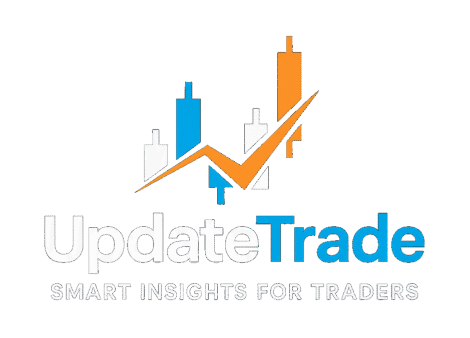-
The procedure is often not fully covered by insurance — if covered at all — and the costs for accessing it can cost around $20,000 or more per cycle.
-
Cybersecurity firm F5’s stock sinks 10% after disclosing nation-state hack
The attack prompted an emergency directive from the Cybersecurity and Infrastructure Security Agency. -
Trump says he thinks the price of fat loss drugs will fall
Trump is rambling on re all sorts of topics. This one hitting the after hours price of weight loss drug makers:
- Think the “fat-loss drugs” will be a lot lower in price
This article was written by Eamonn Sheridan at investinglive.com.
-
Miran talking down tariff inflation impact
Fed board governor Miran is Trump’s lackey at the Fed.
He is talking rubbish on tariffs:
- The downside of tariffs has been nowhere near what people predicted
- Tariffs have had no material signs of growth drag, inflation spike
- Don’t think cost of tariffs will be passed on to consumers
- Burden of tariff cost will fall on exporting countries
This article was written by Eamonn Sheridan at investinglive.com.
-
US stocks close lower. Russell 2000 tumbles by over 2%
US indices all moved lower with the Russell 2000 of small cap stocks faring the worst. That index fell by over 2% on the day. The S&P and Dow each fell by around 0.6%.
A snapshot of the closing levels shows:
- Dow industrial average-301.07. Or -0.65% at 45952.24.
- S&P index fell -41.99 points or -0.63% at 6629.07.
- NASDAQ index fell -107.54 point or -0.47% at 22562.54.
- Russell 2000 fell -52.73 points or -2.09% at 2467.01.
Looking at the S&P components, Financials was the weakest while information technology was the sole component that rose on the day.
-
Financials: -2.75%
-
Energy: -1.12%
-
Utilities: -1.05%
-
Industrials: -0.59%
-
Materials: -0.55%
-
Real Estate: -0.33%
-
Consumer Discretionary: -0.88%
-
Consumer Staples: -0.78%
-
Health Care: -0.11%
-
Telecom: -0.44%
-
Information Technology: +0.13%
This article was written by Greg Michalowski at investinglive.com.
-
U.S. Chamber of Commerce sues Trump administration over $100,000 H-1B visa fee
Trump recently imposed a $100,00 fee on temporary visas for highly skilled workers in a push to have American companies hire more domestic workers. -
Regional banks, Jefferies shares tank as concerns about sour loans grow on Wall Street
Fears are mounting around the health of their lending businesses. -
Fed’s Miran: Fed officials must treat all government policies equally, not only highlighting tariffs
Federal Reserve (Fed) Governor Stephen Miran spoke at the Institute of International Finance Annual Membership Meeting in Washington, DC. -
investingLive Americas market news wrap: Waller signals 25 bps rate cut this month
- Fed’s Waller: Based on current data, a 25 bps cut is justified at upcoming meeting
- More from Waller: Labor supply issues masking weakness in labor demand
- White House: Trump feels tehre was progress in meeting with Putin
- Kremlin Aide:Call was substantive and open. Leaders discuss possible Tomahawk deliveries
- US EIA weekly crude oil inventories +3524K vs +288K expected
- BOJ’s Shimizu says must tread carefully on normalizing policy
- BOJ’s Ueda: My view on global economy hasn’t changed
- China foreign minister: China and US should conduct effective communications
- NAHB US October housing market index 37 vs 33 expected
- October Philly Fed -12.8 vs +8.5 expected
- USTR Greer: China is taking actions as if it wants to decouple
- Canada September housing starts 279.2K vs 255.0K expected
Markets:
- Gold up $102 to $4309
- WTI crude oil down 81-cents to $57.46
- S&P 500 down 0.6%
- Bitcoin down 2.3%
- CHF leads, AUD lags
- US 10-year yields down 7.1 bps to 3.97%
Gold continues to be the most-remarkable story of the moment as the parabolic move accelerated today with a +$100 day and new record above $4300. The move was aided by falling Treasury yields but was otherwise a symptom of intense momentum. That buyers continued to buy every small dip despite a poor backdrop in equities was telling.
This article was written by Adam Button at investinglive.com.
-
Economic calendar in Asia Friday, October 17, 2025 – 2 Fed speakers
Not a lot on the event horizon today.
- 2015 GMT /1615 US Eastern time Miran is expected to participate in a conversation before the Semafor Fall 2025 World Economy Summit.
- 2200 GMT /1800 US Eastern time Minneapolis Fed President Neel Kashkari is set to participate in a town hall hosted by Elevate Rapid City.
- This snapshot from the investingLive economic data calendar.
- The times in the left-most column are GMT.
- The numbers in the right-most column are the ‘prior’ (previous month/quarter as the case may be) result. The number in the column next to that, where there is a number, is the consensus median expected.
This article was written by Eamonn Sheridan at investinglive.com.
End of content
End of content
